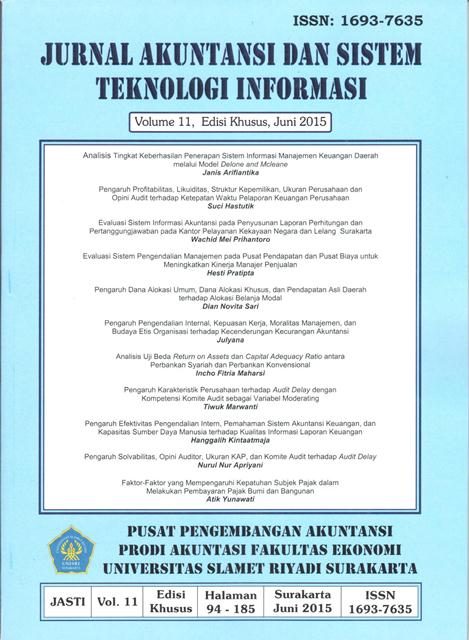ANALISIS UJI BEDA RETURN ON ASSETS DAN CAPITAL ADEQUACY RATIO ANTARA PERBANKAN SYARIAH DAN PERBANKAN KONVENSIONAL
Abstract
This study aimed to analyze the differences Return on Assets and Capital Adequacy Ratio between Islamic Banking and Conventional Banking in Indonesia. Results are expected to be used as consideration or decision-making reference for investors and bank management. The object of this research is Islamic banking and banking companies konvensioanal. The company, among others, PT Bank Syariah Mandiri Tbk and PT Bank Rakyat Indonesia Tbk. Quantitative data used in this study of the financial statements. Bank Syariah Mandiri Tbk and PT Bank Rakyat Indonesia Tbk 2011 - 2013. This research uses analytical techniques using different test models to obtain a comprehensive picture of the differences Return on Assets and Capital Adequacy Ratio between Islamic and conventional banking company. Based on the analysis we concluded that there is a difference Return on Assets (ROA) between the Islamic Bank and Conventional Banks in Indonesia, so that H1 is accepted, it means the ability of conventional banking company in Indonesia in generating income from assets used better when compared with Islamic banking. There are differences in the Capital Adequacy Ratio (CAR) between the Islamic Bank and Conventional Banks in Indonesia, so that H2 is accepted, it means the ability of conventional banking company in Indonesia to bear the risk of any credit/risk assets which are better when compared with Islamic banking. Keywords: Return on Assets, Capital Adequacy Ratio, Financial Performance.Downloads
Published
2015-08-26
Issue
Section
Artikel
License
Authors who publish this journal agree to the following terms:
- Authors retain copyright and grant the journal right of first publication with the work simultaneously licensed under a Creative Commons Attribution License that allows others to share the work with an acknowledgement of the work's authorship and initial publication in this journal.
- Authors can separately make additional contractual arrangements for non-exclusive distribution published by the journal (e.g., publish it in a book), with an acknowledgement of its initial publication in this journal.
- Authors are allowed and encouraged to send their work via online (e.g., in the institutional repositories or their website) after published by the journal.










